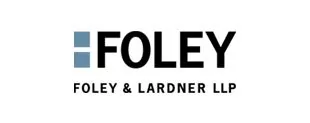Increasing Coverage Does Not Correlate With Higher Utilization Across States
Four key findings were highlighted in the Study.1 In sum, payer coverage of medically appropriate genomic tests is increasing, but this increase in coverage did not correspond with higher utilization of testing across the United States. As such, medically appropriate genetic testing was inconsistently utilized across the United States. While inconsistent coverage and reimbursement policies are barriers to patient access to testing, the Study concluded that these policies do not entirely explain inconsistent test utilization. Other utilization barriers were identified for further attention.
Barriers And Challenges
The Study acknowledged that obtaining payer coverage and reimbursement for genomic testing is one of several challenges to providing patients access to these medically important tests.2 However, other challenges were identified that prevent full test access. These included a lack of clarity and consistency of payer coverage policies within and between states and across clinical areas. Identified barriers to test utilization were: socioeconomic determinants of health (such as the distance patients must travel to access genomic medical specialists), cultural and community factors (including known racial and ethnic health disparities across the health care systems), and data security and privacy concerns. Lack of awareness, knowledge and education of personalized medicine among health care providers and patients were also identified as ongoing challenges to full test utilization.
Opportunities For Improvement
There is no doubt that research and development of personalized medicine diagnostics and therapies have been increasing but room for improvement remains. As noted by the Study:
"Over the last 20 years, a steadily growing number of genetic biomarkers that contribute to disease have been discovered. New targeted therapies being developed to improve outcomes for responder patients add to this value proposition. However, utilization rates for medically appropriate NIPT, WES, and CGP genomic testing are inconsistent and variable – even when favorable coverage policies exist. The full value of genomic testing cannot be realized unless utilization increases."3
The authors of the Study encourage proponents of personalized medicine to continue to develop and disseminate evidence supporting the clinical and economic benefits of genomic testing. Additional studies that evaluate each identified barrier and its impact on access and utilization will help address and remove barriers to access for every patient that needs it.
Footnotes
1. Study at page 5.
2. Study at page 21.
3. Study at page 22.
The content of this article is intended to provide a general guide to the subject matter. Specialist advice should be sought about your specific circumstances.
We operate a free-to-view policy, asking only that you register in order to read all of our content. Please login or register to view the rest of this article.


